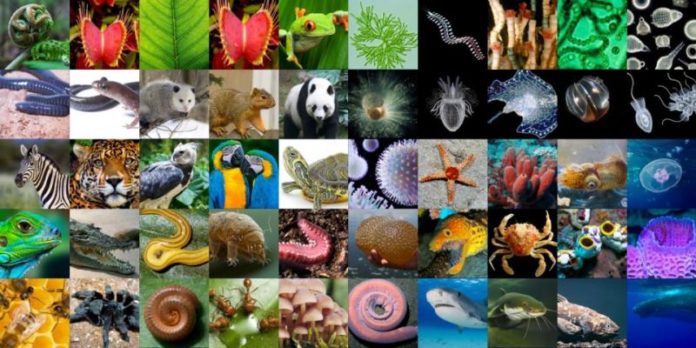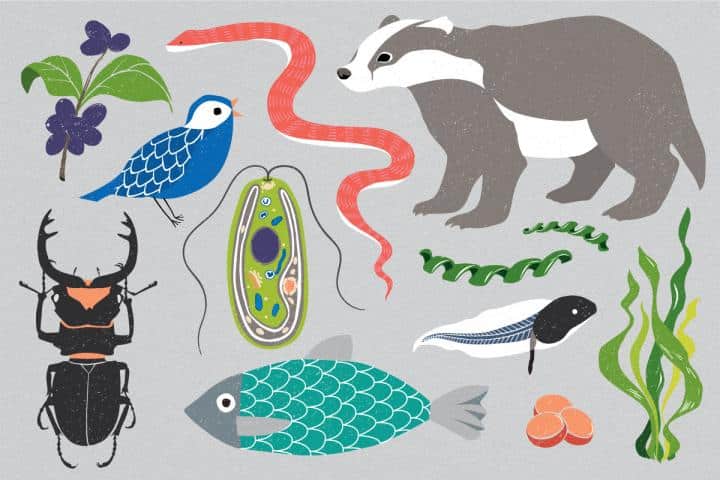In Moonshot for Biology, a Project to Sequence all Eukaryotic Biodiversity
Increasing our understanding of Earth’s biodiversity and responsibly stewarding its resources are among the most crucial scientific and social challenges of the new millennium. And powerful advances in genome sequencing technology, informatics, automation, and artificial intelligence, have propelled humankind to the threshold of a new beginning in understanding, utilizing, and conserving biodiversity. For the first time in history, it is possible to efficiently sequence the genomes of all known species and to use genomics to help discover the remaining 80 to 90 percent of species that are currently hidden from science.
Therefore, a new ambitious project dubbed a moonshot for biological science- The Earth BioGenome Project- aims to sequence the DNA of all the planet’s eukaryotes, some 1.5 million known species including all known plants, animals, and single-celled organisms. The ambitious project will take 10 years to complete and cost an estimated $4.7 billion.
The project stands to redefine our understanding of life on Earth, the researchers claim and carve inroads in other fields such as conservation, technology, genomics, and medicine, among others. It might also lead to the discovery of 10 to 15 million eukaryotes species still unknown
, the bulk of which is believed to be single-celled organisms, insects, or tiny marine life.A goal as ambitious as this one requires the help of many people. As such, the project will gather citizen scientists and students around the globe for help. Whatever data they gather will end up being available for free for other scientific uses.
EBP calls for scientists to sequence the genomes of 9,330 species, one from each plant, animal and protozoan taxonomic family as reference genomes in the first three years. Then, the plan calls for sequencing the genome of one species from each genus—the next taxonomic division finer than family—during years four to seven, although in less detail, for a total of about 150,000 genera. The remaining 1.5 million species would be sequenced in still less detail during the final four years of the project.

“The partnership will construct a global biology infrastructure project to sequence life on the planet to enable solutions for preserving the Earth’s biodiversity, managing ecosystems, spawning bio-based industries and sustaining human societies,” said Harris Lewin, who chairs the Earth BioGenome Project working group. Lewin holds appointments in the Department of Evolution and Ecology and the UC Davis Genome Center.
“Although a global enterprise of this scale might initially seem technically challenging or expensive, we are confident that we currently have all of the necessary tools and knowledge to accomplish these audacious goals through coordinated high-throughput workflows that are replicated in ecosystems throughout the world,” said Warren Johnson, a research zoologist at the Smithsonian Conservation Biology Institute. “We are fully aware that the longer we wait to get organized and started, the more likely we are to lose important biological insights of our planet’s biodiversity.”
Natural history museums and botanical gardens will serve a critical role in providing the expertise on the classification of biodiversity and the necessary genomic samples for analyses to ensure the success of the Earth BioGenome Project. The National Museum of Natural History’s Global Genome Initiative (GGI) is already filling their liquid-nitrogen tanks with samples provided by scientists from around the globe.

Technology will be key to the project, such as terrestrial and underwater robots, portable genetic sequencers and instrumented drones that can go out, identify samples in the field, and bring those samples back to the laboratory. When completed, the project is expected to require about one exabyte (1 billion gigabytes) of digital-storage capacity.
The EBP, however, is not beginning its massive task from scratch. It is building on already-existing efforts to sequence the genomes of more specific taxonomic groups such as the Global Invertebrate Genomics Alliance (GIGA), which is targeting 7,000 non-insect/non-nematode species with an emphasis on marine taxa, and the i5K Initiative, which is sequencing the genomes of no less than 5,000 arthropod species important to agriculture and biological research.
So far, scientists from around the world, individually and in various networks, have sequenced the genomes of about 15,000 species, less than 0.1 percent of all life on Earth.
The total cost for phase I of EBP is estimated at about $500 million. The total cost of the 10-year project is expected to be roughly $4.5 billion. EBP’s feasibility benefits from the sharp decline in sequencing costs, down from $10,000 per genome in 2001 to $1,000 today.
As a proof of concept project, Lewin and partners have organized the Amazon Bank of Codes initiative in the Amazon basin. The pilot project aims to offer indigenous and traditional communities an opportunity to reap a fair share of the economic value generated from the use of biological data and natural assets from their local biomes.































